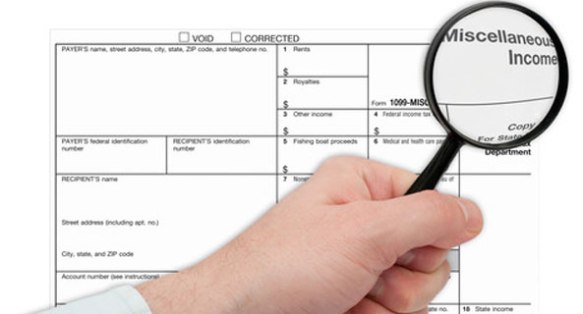Delegating tasks can be a great way to increase your sales or get more done as a result of hiring other people to sell or do work for you. Increasing sales by letting other people sell for you, how does that sound?
Now your business is running like well tuned race car. Just like driving too fast, be careful, your speedy haste for success might turn into your terrifying encounter with the IRS.
A lot of business owners increase production this way and claim to make these workers independent contractors. This is why owners and managers should be familiar with 1099 filing requirements.
Paying individuals to perform tasks to increase efficiency creates some obligations for you as a tax payer. Safe Harbor Accounting would like to point out what your obligations are: “It is very important to have all individual vendors complete a W-9 form and keep them on file. Whenever the individual vendor has more than $600 in payments during a calendar year, the company should issue a 1099-MISC form.”
Failure to keep records on file and report this information to the Internal Revenue Service accurately can result in stiff penalties:
- The penalty for failing to file 1099s can be $30 per missed 1099, up to a maximum of $250,000.
- The penalty for filing inaccurate 1099s is $250 per 1099, with no maximum penalty.
Additionally, the IRS might determine that the lack of 1099s indicates the parent should have been withholding taxes for the affiliate and could impose a 31% income tax on 1099 amounts. In effect, the parent would be paying the vendor’s income tax.
The trouble with 1099s
Company, “Widget Profits” has experience with delegating tasks, including two programs in two very different niches. However it took some additional expertise for the company to get on track for handling 1099 forms and other tax documentation in a way that keeps the IRS happy.
“For several years, the company never collected W-9s or filed 1099′s for various reasons. They thought they did not t make that much money (or hit the threshold), and their bookkeeper and accountant was the mother of the owner. She was not familiar enough with the process to insist upon it, and didn’t fully understand the implications of not filing.
That all changed when they hired us to represent them in front of the IRS. We were able to hire a new bookkeeper—one who understood both delegating tasks and the IRS’ reporting requirements. This made the auditor happy enough to let this issue go and move onto other areas of the audit.
The thrust of the new 1099 system, a vendor can’t be paid unless there’s a W-9 on file. New vendors are asked to provide W-9s once they’ve earned their first payment. This system should be used by all small businesses.
Happy Ending
“It’s a very easy system for everyone involved,” “Widget Profits” says. Put the right person in charge and contact Safe Harbor Accounting. We know all the ins and outs and duties around delegating tasks. Delegating is not easy, although now we made it easier.
As we closed the case with the IRS, we concluded that the best defense is a good offense. Get ahead of the game and make sure you contact us.




